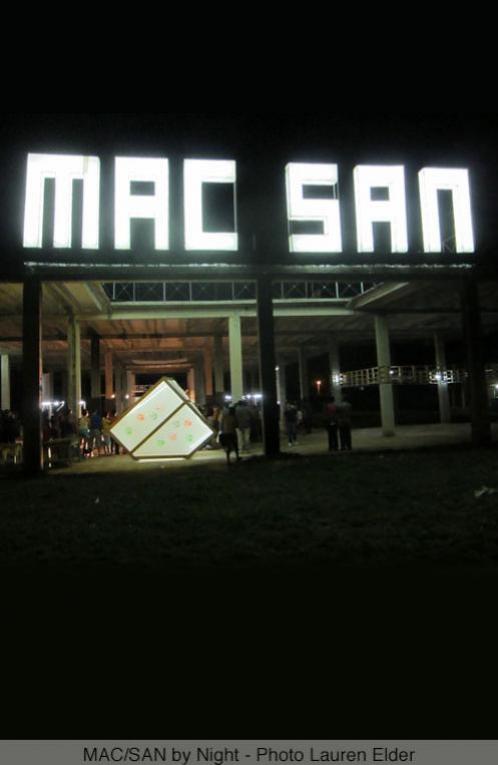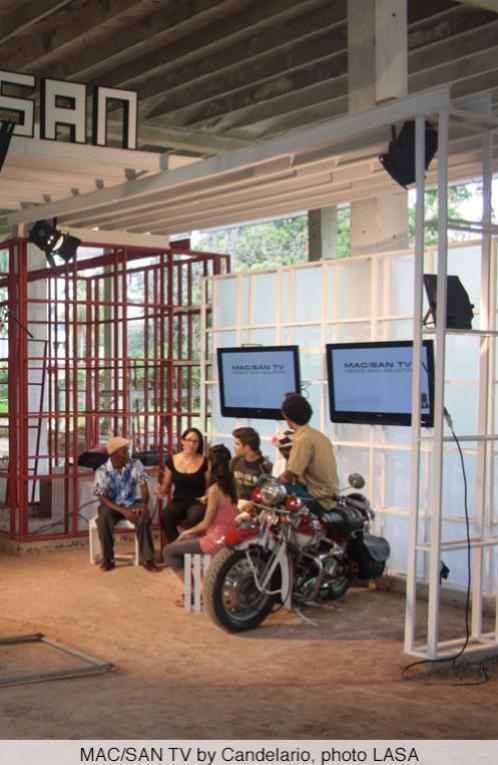Video Credits: "MAC/SAN de la Habana", video documentary by Aleida Pinero Meneses and William Capote Elizardy, produced by LASA, compiling Cuban national TV biennial news and LASA's archive.
Countries/Territories Involved
MAC/SAN was set in a western suburb of Havana: the neighbourhood of San Agustin in La Lisa, Cuba.
San Agustín is a 4 km2 neighbourhood in the periphery of Havana with more than 37,000 inhabitants. Built on fruit farms before the 50s, it became San Agustín, a residential area for mostly white middle class residents between 1952 and 1954. In the ’60s, San Agustín saw major changes: extended to the nearest neighbourhood, Ermita, it doubled its area and its population dramatically increased.
San Agustín’s architecture is comprised of a mix of a few small neo-colonial farms and Art Nouveau family houses and a mostly 1970s prefabricated low-rise buildings (Soviet Union models). San Agustin and Allamar—on the other side of Havana—are the two neighbourhoods mentioned by architects and urbanists to illustrate the massive urban redevelopment undertaken around Havana in the 1970s. San Agustin is now diverse from an ethnic and social point of view: scholars, doctors, workers, teachers, the unemployed, independent workers etc. (Although, this diversity is not immediately perceptible in ways expected in western capitalist countries.)
Since 2007, San Agustín has seen a new wave of expansion, which will continue in the coming years with the construction of hundreds of apartment building and the introduction of many services. This area of development—threatening a large organoponico (government-run urban organic garden)—is meant to become the new downtown of San Agustín.
Community Focus
San Agustin and the global art community
MAC/SAN explores various possibilities of interactions between artistic practices and the public sphere of San Agustín, in the transitioning Cuban social, political, and economic context of the spring of 2012. The various actions that took place within MAC/SAN have caused new local debates on local and global subjects to reach the general public, in ways unseen before in Cuba. Eleven art works and artistic projects were realized or implemented, many of them involving the participation of the residents of San Agustín and students from Havana. The issue of sustainable development informed these explorations, taking into account and measuring the current trends of Cuban society and anticipating its evolution. The propositions made by the artists, who came from Cuba, Europe, North America, and South America, generated a wide range of formal approaches and perspectives in terms of architecture, urbanism, heritage (art, gastronomy, alternative medicine), environment, and economy.
The publication aims at an international diffusion of the project and at collecting the critical opinions of artists, art theoreticians from the western world, Caribbean, Latin America, and of participants from San Agustín and the rest of Cuba. The goal is provide thorough descriptions and analysis of the 11 actions taken within MAC/SAN and to contribute to a critical dialogue on artistic practices in the public sphere.
For Participants, Partners and Co-Funders
Please refer to MAC/SAN blog for project partners and co-funders.
Time Period
2011-2012. Presented as part of the XIth Biennial of Havana (May/June 2012)




